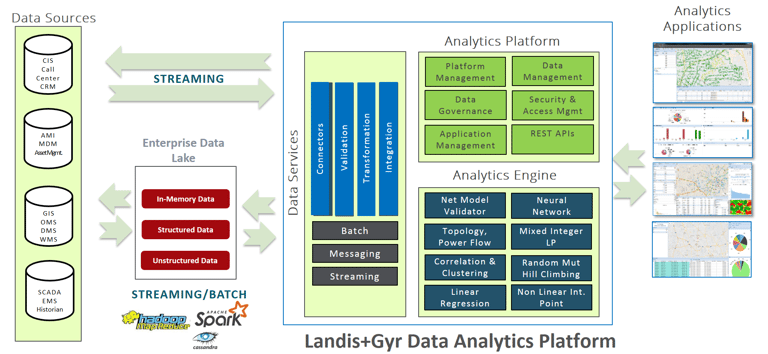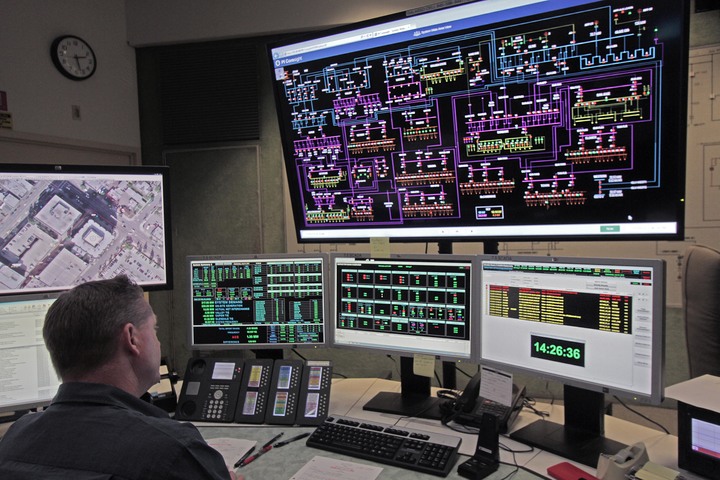According to Edison Foundation1, smart meter deployments reached nearly 70 million by the end of 2016 and they will reach 90 million by 2020. More than 30 electric companies in the United States today have fully deployed smart meters. Another area where utilities are going strong is the deployment of smart sensors such as fault circuit indicators (FCIs) and phasor measurement units (PMUs). Increasingly, utilities today are adopting the deployment of smart sensors to better monitor and manage their distribution network, improve, and enhance their business processes, and offer better customer services. Smart meters and sensors, in addition to helping in the basic functionalities such as monitoring consumption or circuit outage, generate vast amounts of data about the operational condition of the assets to which they are connected. Many utilities today are considering leveraging operational data by further analyzing data to fine-tune business processes, enhance customer services, and improve power quality, reliability, and energy efficiency. The key to the data analysis is a physics based model.

What is a physics-based model and how does it help in data analysis?
A physics-based model is a digital replica of the electrical distribution system built by mathematically representing the physical characteristics of the assets within the distribution system. For example, consider an asset such as a distribution transformer. The transformer can be uniquely represented by winding formation, turns ratio, primary and secondary nominal voltages, nominal power output, the geo-spatial location where it is installed, installation date, and manufacturer. This provides significant information about the transformer’s age and environmental physics. By combining the static data of the physical characteristics with the dynamic data about the transformer’s operational behavior - such as power output or ‘loading’ over time and the operating voltages at primary and secondary side - a dynamic digital model is built. This digital model is continuously updated by bringing in new data from the real transformer in the field. This unified federated image, or model of the transformer, can be used to make important predictions about the life and durability of the asset. Similar models can be built for other asset types within the distribution system, such as overhead lines, underground cables, circuit breakers, switches, fuses, capacitor banks or regulators, by analyzing the static and surrounding dynamic data. Having a digital model helps utilities better understand the past operational behavior, as well as proactively predict the future asset behavior.
How does Landis+Gyr Advanced Grid Analytics use physics-based modeling to deliver predictive and prescriptive analytics?
Landis+Gyr’s Advanced Grid Analytics (AGA) offers a scalable and flexible platform for collecting, processing, validating, and analyzing massive amounts of datasets from various sensors and enterprise systems. The platform combines static and dynamic data related to various utility assets, and creates a unified physics-based digital model of the entire utility distribution system. The digital model is built by gathering data from various sources, such as geospatial data from GIS, consumption and voltage data from AMI, and outage data from OMS. The model is continuously kept current and updated by bringing in new data. With the AGA platform, users can define how much data to process, how fast to process and with what periodicity. The entire data ingestion, retention, analysis, and deletion process is automatized and configured using platform data service. The platform uses advanced algorithms on top of the digital model to deliver applications, enabling utilities to predict transformer loss of life, monitor and alert on theft and tamper, track reliability KPIs, and recommend asset investment plans to improve reliability KPIs.

Landis+Gyr AGA Platform
Landis+Gyr’s AGA platform provides access to REST APIs that users can leverage to quickly access the physics based digital data model, the advanced algorithm, and the user interface tools, using which users can also design, develop, deploy, and maintain their own custom applications.
With the physics-based digital data model and an elastic and scalable architecture, AGA not only delivers a comprehensive set of grid analytics applications, it also delivers a futureproof platform enabling utilities to develop their own applications on top of AGA platform, to meet their specific challenges and analytic needs.
Learn more about physics-based analytics by visiting LandisGyr.com.
1 - Electric Company Smart Meter Deployments: Foundation for A Smart Grid








-001.jpg)

Leave a comment